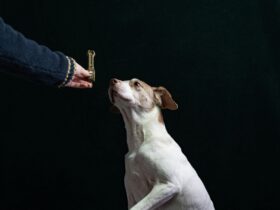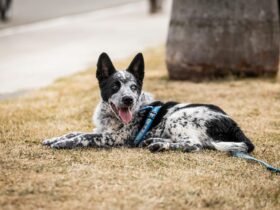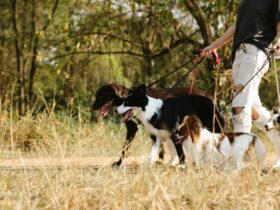Training your dog using positive reinforcement is one of the most effective and humane methods available. This approach focuses on rewarding desirable behaviors rather than punishing unwanted ones, creating a more enjoyable learning experience for both you and your dog. Here are six easy tips to help you get the most out of positive reinforcement training, making the process enjoyable and effective.
1. Understand the Basics of Positive Reinforcement
1.1. What is Positive Reinforcement?
Positive reinforcement involves adding something pleasant immediately after a desired behavior, increasing the likelihood that the behavior will be repeated. This can include treats, praise, toys, or other rewards that your dog finds motivating.
1.2. Why Positive Reinforcement Works
- Encourages Repetition: By rewarding good behavior, you reinforce that behavior, making it more likely to occur again.
- Builds Trust: Positive reinforcement helps build a trusting and respectful relationship between you and your dog.
- Reduces Fear: Unlike punishment-based methods, positive reinforcement avoids fear and anxiety, creating a more positive training experience.
2. Choose the Right Rewards
2.1. Identify What Your Dog Values
Understanding what motivates your dog is crucial:
- Treats: Many dogs are highly motivated by food. Choose high-value treats that are small, soft, and easy to chew.
- Toys: Some dogs prefer toys. Use their favorite toys as rewards during training sessions.
- Praise and Affection: For some dogs, verbal praise and physical affection are sufficient rewards. Make sure to use enthusiastic and encouraging tones.
2.2. Use Varied Rewards
Mix up rewards to keep your dog engaged:
- Treats: Use different types of treats to maintain your dog’s interest.
- Toys and Games: Incorporate their favorite games or toys as part of the reward.
- Praise: Combine verbal praise with treats or toys to reinforce positive behavior effectively.
3. Be Consistent with Commands and Rewards
3.1. Use Clear and Consistent Commands
Consistency is key in training:
- Choose Simple Commands: Use clear, concise commands for each behavior. For example, use “sit” for the sitting command and “come” for recall.
- Use the Same Words: Always use the same words and tone for each command to avoid confusing your dog.
3.2. Deliver Rewards Immediately
Timing is crucial for effective reinforcement:
- Immediate Reinforcement: Deliver the reward immediately after the desired behavior to help your dog connect the action with the reward.
- Consistency in Timing: Consistent timing helps reinforce the correct behavior and prevents confusion.
4. Keep Training Sessions Short and Engaging
4.1. Duration of Sessions
Short, focused sessions are more effective:
- Keep Sessions Brief: Aim for 5-10 minute training sessions to keep your dog’s attention and prevent boredom.
- Frequent Sessions: Short, frequent sessions are more effective than long, infrequent ones.
4.2. Make Training Fun
Incorporate play and variety into training:
- Incorporate Play: Use playtime as a reward or part of the training process to keep your dog engaged.
- Variety in Exercises: Change up training exercises and commands to maintain your dog’s interest and enthusiasm.
5. Use Positive Reinforcement for Everyday Training
5.1. Reinforce Good Behavior Throughout the Day
Apply positive reinforcement in everyday situations:
- Daily Interactions: Reinforce good behavior in various contexts, such as walking politely on a leash, waiting calmly, or following commands around the house.
- Behavior Management: Use positive reinforcement to manage and redirect undesirable behaviors, such as jumping or barking, by rewarding calm and appropriate behavior.
5.2. Encourage Desired Behaviors
Reinforce specific behaviors you want to encourage:
- Training Goals: Set clear training goals and use positive reinforcement to achieve them. For example, reward your dog for sitting on command or walking nicely on a leash.
- Consistency in Expectations: Be consistent in your expectations and rewards to ensure your dog understands what behaviors are desired.
6. Troubleshoot Common Challenges
6.1. Dog Not Responding to Rewards
If your dog isn’t responding:
- Reevaluate Rewards: Ensure the rewards you’re using are highly motivating for your dog. If necessary, try different types of rewards.
- Check Timing: Make sure you’re delivering rewards immediately after the desired behavior to reinforce the connection.
6.2. Overuse of Treats
If your dog becomes reliant on treats:
- Gradual Reduction: Gradually reduce the frequency of treats and increase the use of verbal praise and affection.
- Use Variable Rewards: Occasionally use treats as a reward but also incorporate praise, toys, or play to maintain interest without creating over-reliance.
6.3. Training Plateau
If progress slows:
- Review Techniques: Review your training techniques and ensure you’re being consistent with commands and rewards.
- Add New Challenges: Introduce new training exercises or increase the difficulty to keep your dog engaged and progressing.
7. Building a Strong Bond Through Training
7.1. Positive Interactions
Focus on creating positive experiences:
- Quality Time: Spend quality time with your dog, engaging in activities they enjoy and incorporating training into these activities.
- Encouragement and Support: Use positive reinforcement to build a supportive and encouraging training environment.
7.2. Mutual Respect
Build mutual respect through training:
- Respect Your Dog’s Limits: Be mindful of your dog’s limits and avoid pushing them too hard. Training should be a positive experience for both of you.
- Encourage and Support: Provide encouragement and support throughout the training process to foster a positive relationship.
8. Conclusion
Training your dog with positive reinforcement is an effective and humane way to encourage good behavior and strengthen your bond. By choosing the right rewards, being consistent, keeping sessions engaging, and applying positive reinforcement in everyday situations, you can achieve great results. Remember to troubleshoot common challenges and focus on creating positive experiences for both you and your dog.
If you have any experiences or tips about positive reinforcement training, feel free to share them in the comments below. Happy training!











Leave a Reply